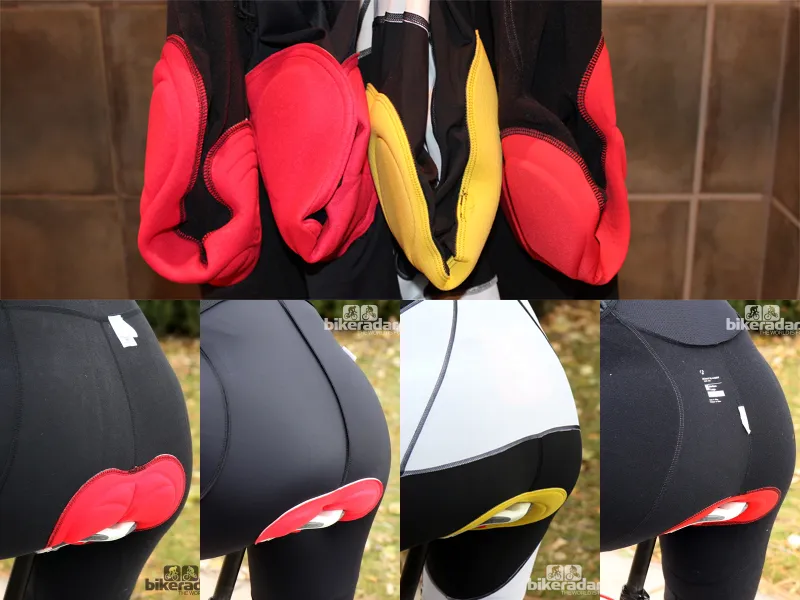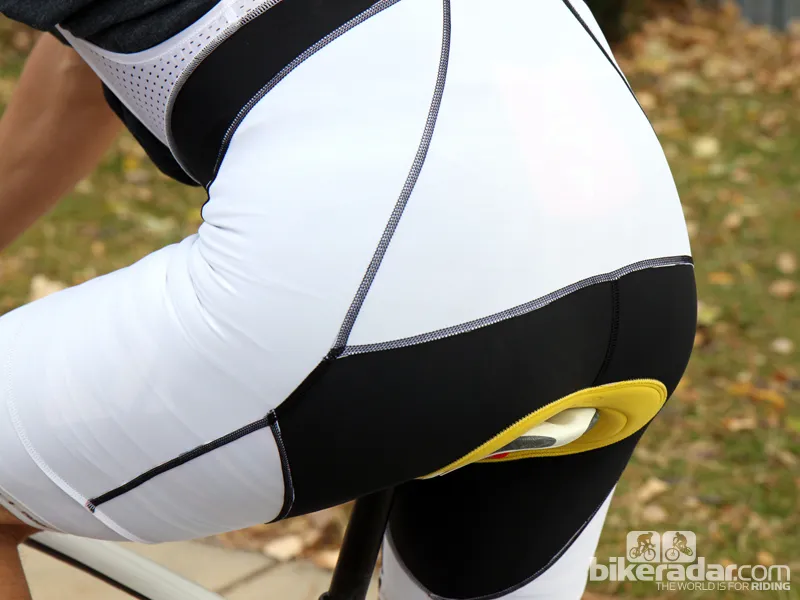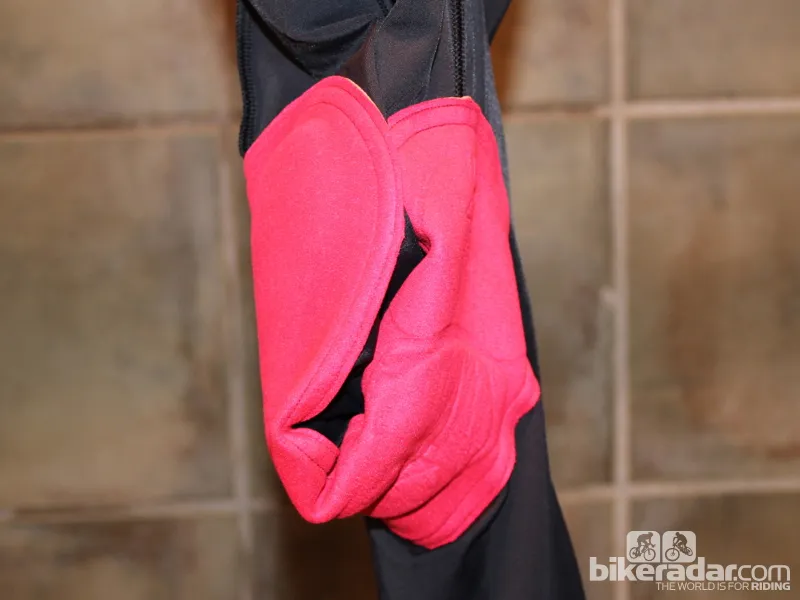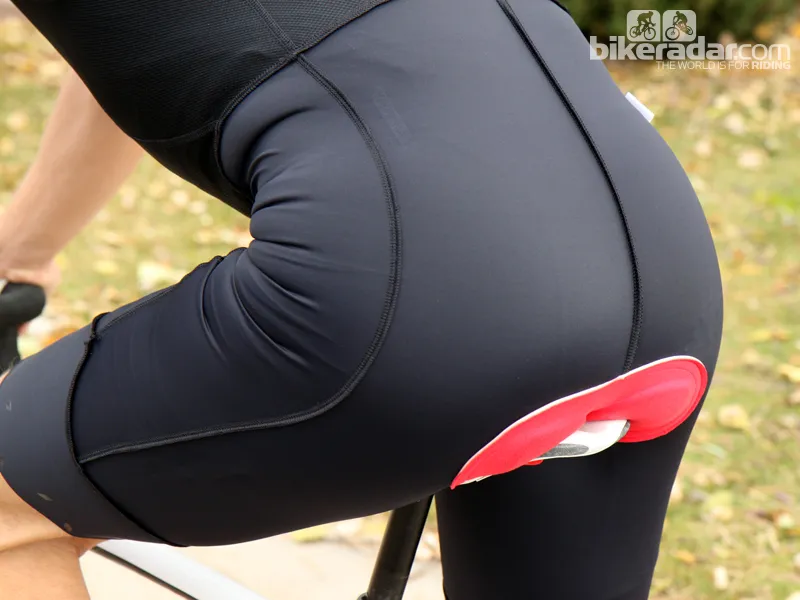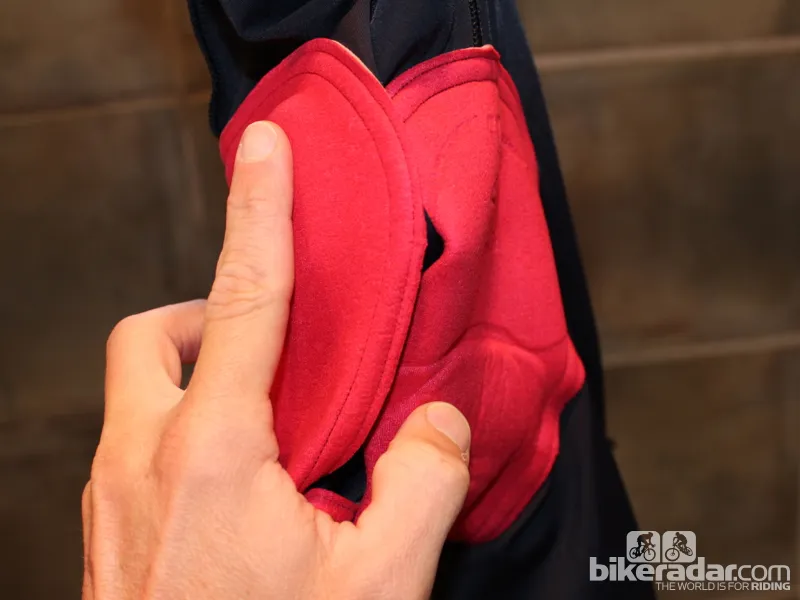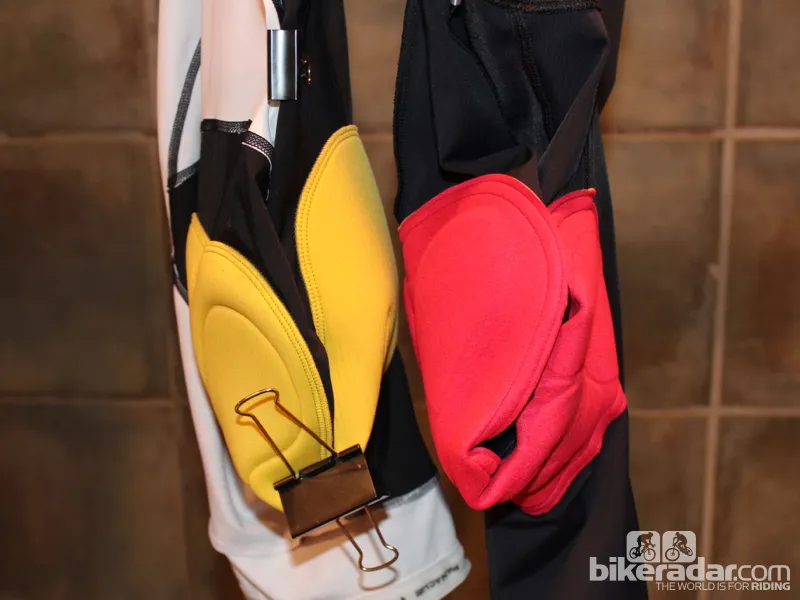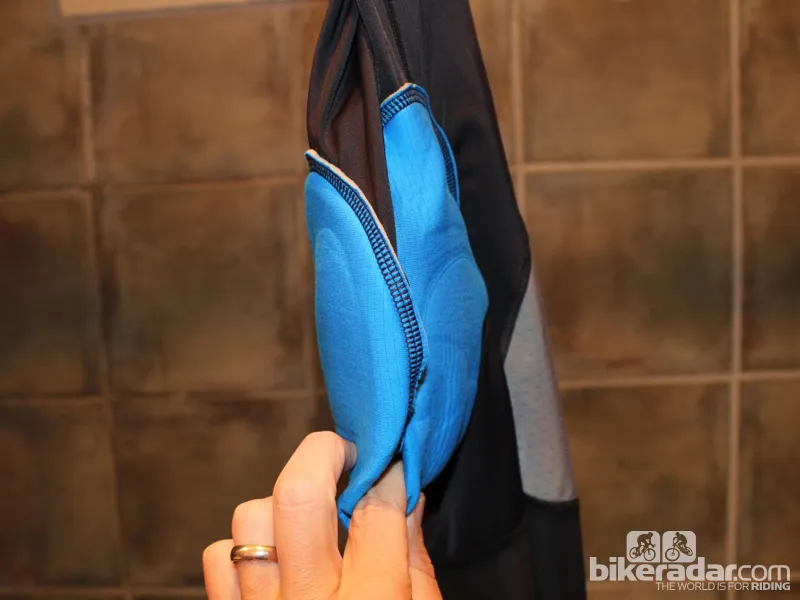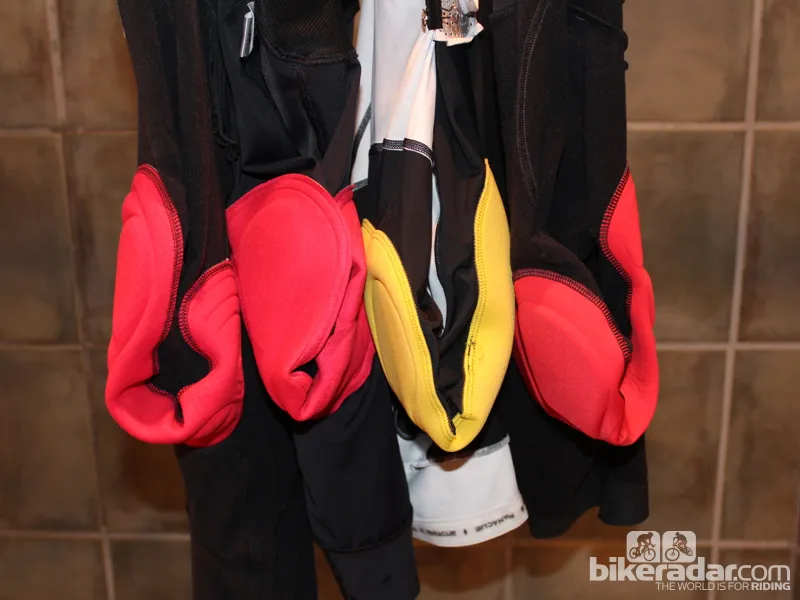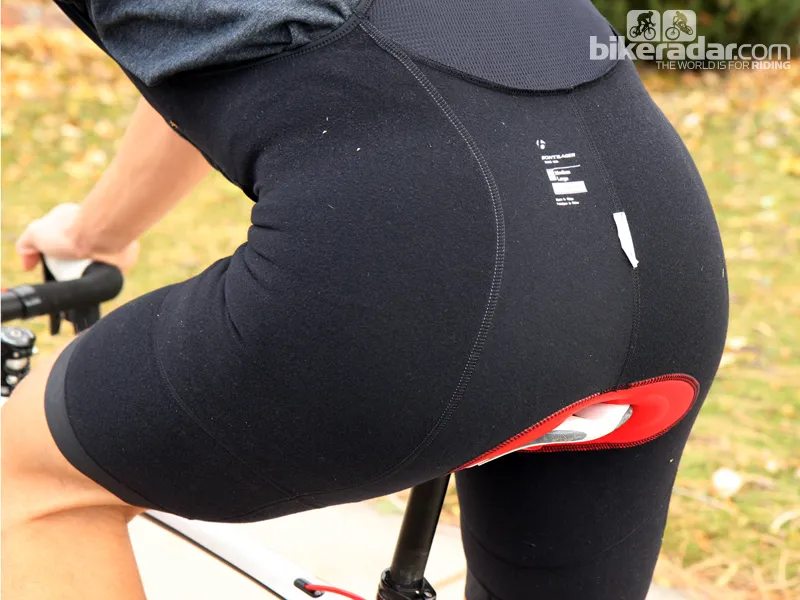A bib short can be exceedingly expensive and tout a laundry list of technical features — but if the chamois placement is off then it's all for naught. So how do you get a great fit? We spoke to a few companies about their processes, and share our simple tip for checking for good placement below.
A cycling chamois has a few basic functions: to wick moisture, to reduce friction and to cushion your sit bones. Unfortunately, too many bib shorts fail on the latter point.
Back when the chamois actually was leather from a chamois goat it was a single layer of uniform thickness. It didn’t matter exactly where it started or ended, front to back, as long as the parts in question were covered. Most of the padding was handled by the saddle.
But now that the chamois pads are highly sculpted, multi-density creations of foam and fabric, where the pad starts and ends does matter. Much of the sculpting is intended to replicate the function of an anatomic saddle, with cushioning for the sit bones (ischial tuberosities) complemented by relief areas for circulation.
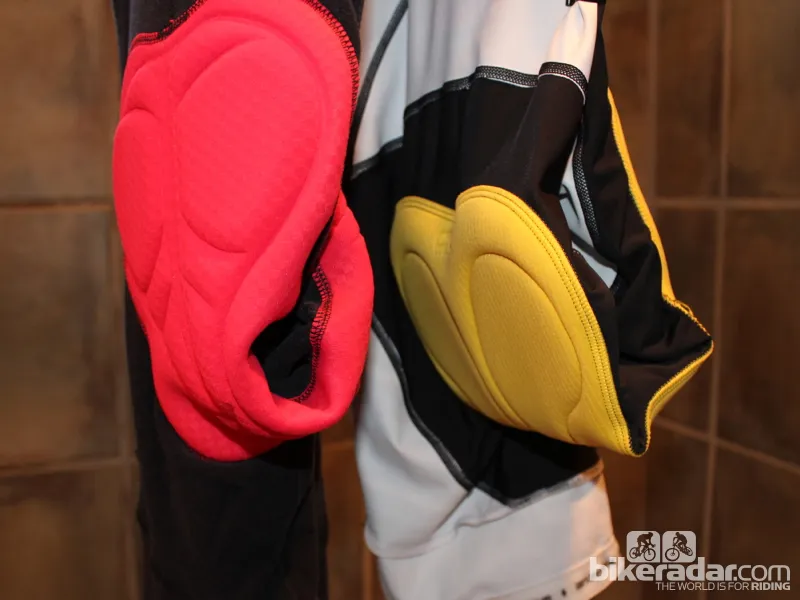
Unless you are riding a recumbent, the chamois should not be as high in the back as it is on the model at left
Where it goes wrong — backwards pad rotation
What a chamois shouldn’t do is cram padding into your soft areas, restricting circulation the same way a poorly shaped or overly padded saddle does. It also shouldn’t introduce additional friction into the equation with ridges, seams or anything else.
When chamois placement is way off — in our experience clothing companies err on the side of rotating the pad backwards — the effect is similar to sitting on the wrong part of the saddle.
Now keep in mind that, for most of us, the sit bones contact the saddle ahead of the widest part of the saddle and the widest part of most chamois pads. But that wide part of the chamois should match up to the wide part of the saddle. If it is way behind, the thick padding pointing at the rider behind you isn’t hurting anything, but it does indicate that you are sitting somewhere besides where the chamois designer intended.
Which brings us to a key point: idea versus execution, a design versus the final product. When you climb on the bike, you are not sitting on an idea, you are sitting on a factory’s execution. A company’s ability to carefully control production at sewing machines thousands of miles from its headquarters is key to your experience.
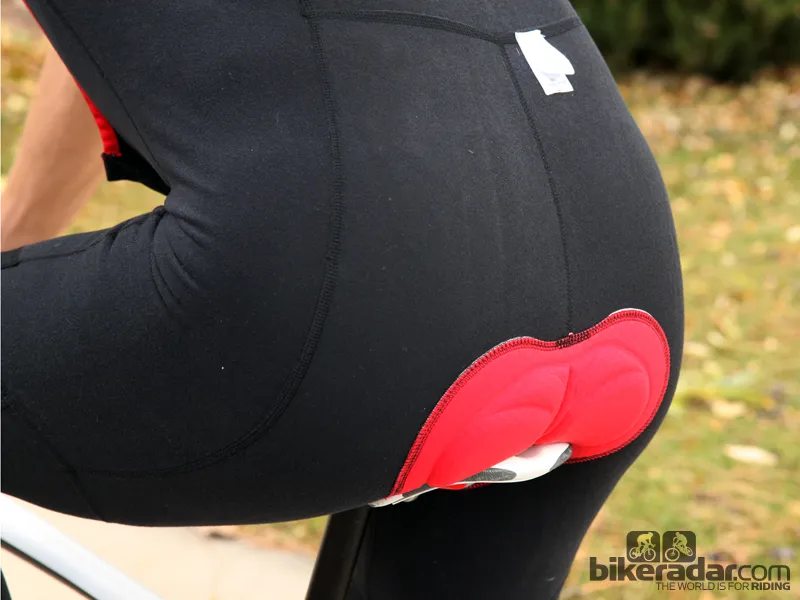
Excess padding behind the saddle indicates that you are not sitting where the designer intended
“Chamois pad placement is the most difficult part of the sewing process of a short,” said Don Powell, founder of Panache Cyclewear. “Sewing in the chamois involves stretching the fabric as the chamois gets sewn in. It takes patience and a lot of practice. The real secret is simply to have great sewers and a process that rewards craftsmanship over speed. The key to the chamois pad shape and how that lines up with the short's panels is making the bottom part of the ‘U’ in the rise the appropriate width. Make it too wide and it will feel like a diaper. Make it too skinny and it will fall into the nether regions.”
At Bontrager, a key part of the development process involves 50 test riders who aren’t part of the design team.
“We determine correct placement throughout development based on a lot of expertise, understanding how the chamois footprint and short pattern work together and a combination of fit and wear test,” said Bontrager spokesman Sam Foos. “We can usually get pretty close through development, which is all conducted on the bike, but then every new product gets at least a month-long wear test period amongst a network of 50 testers before it goes to production. We always end up tweaking a bit after wear testing.”
After looking at dozens of pairs of bib shorts, we noticed a simple rule of thumb in chamois placement: With the bib straps on a clotheshanger, the back of the pad absolutely should not be higher than the front of the pad. In our favorite shorts, the dense part of the pad — the saddle-like area — is centered at the bottom, with the front ‘modesty’ cover rising up noticeably higher than the back end of the pad.
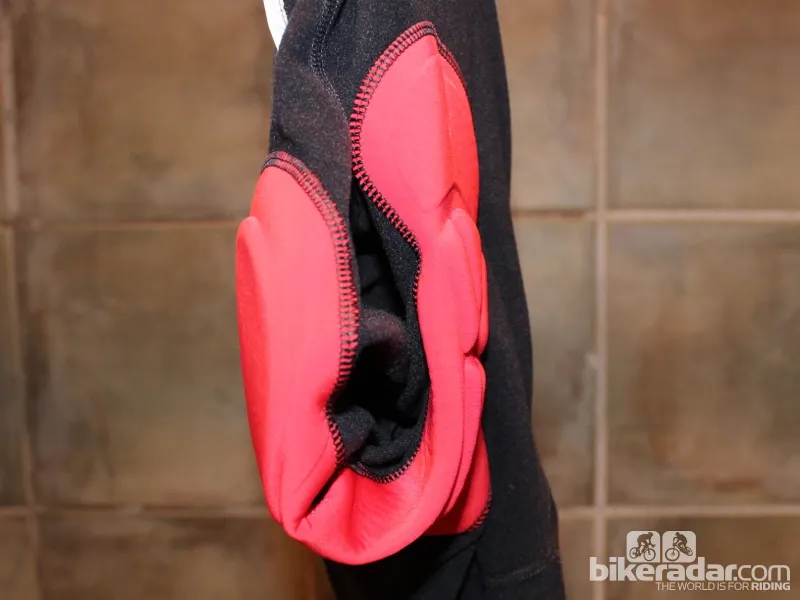
On this Bontrager chamois, the thick part of the pad is balanced front-to-back, with the front modesty panel rising up above
At Pearl Izumi, longtime clothing manager Jon Knoll said that the same pair of shorts will often fit two riders differently. And as such, designers should "find where the pressure points are, and elongate the padding under them, rather than just put it in a little dot," Knoll said. "And just like with saddles, there is no one [clothing] brand that is the be all, end all. Different brands have different ideas as to where that ideal spot is, and everyone has a little different anatomy."
Shape and thickness of the pads are certainly personal preference, without a right or wrong answer — "I’ve met pro racers who don’t use a chamois, and those who want big pillows," Knoll said — but placement of the chamois should always be spot on.
So who do you think does it well? Over the years, we have appreciated the chamois placement on Giordana, Panache, Assos, Castelli and, recently, Bontrager. What is your most comfortable pair of bib shorts?
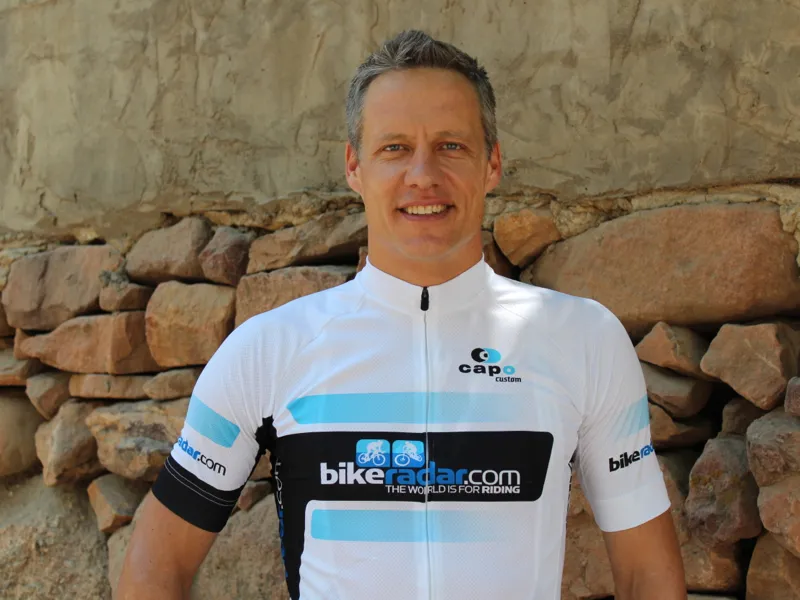
Bend in the Road is a column by Ben Delaney, who has been writing about bikes for 15 years. A former Cat 1 roadie, Delaney now has a garage full of kids bikes. Follow him on Twitter at @ben_delaney or Strava at ben-delaney.
